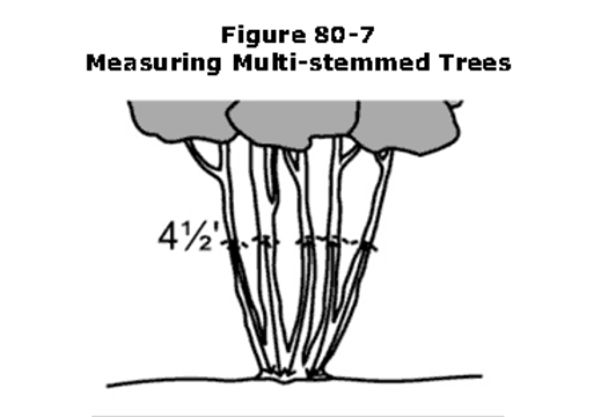Front Range Tree Treatment, LLC 720-763-4049
How to Estimate
Diameter at breast height, DBH, can be measured quickly by the homeowner. I use a measuring tape like tailors use but a piece of string can do the job also. Using a metal measuring tape like a contractor would use will not give an accurate measurement but can give you a ball park figure if you do not have any other means.
-With a measuring tape, measure 4.5 feet up the trunk of the tree.
-Wrap your tape measure around the tree at that height. Make sure your tape measure or string is tight around the trunk of the tree and take your measurement.
-If using a string, mark the string so you can measure the length to get the circumference.
-Convert the circumference to diameter by dividing by 3.
-Multiply the diameter by $9.00.
This will give you your estimate. For example: you measure a tree and the circumference is 45 inches. Divide 45 by 3 to get the diameter of 15 inches. Multiply 15 times $9.00 to get an estimate of $135.00.
Below are figures to show you how to measure based on your tree and its location:
Measuring a Regular Tree:

Measure around the tree at 4.5 feet high using a string or tailors tape.
Measuring on an Angle:

When the trunk is at an angle or is on a slope, the trunk is measured at right angles to the trunk 4.5 feet along the center of the trunk axis, so the height is the average of the shortest and the longest sides of the trunk; see Figure 80-5.
Measuring Split Trunk Tree:

When the trunk branches or splits less than 4.5 feet from the ground, measure the smallest circumference below the lowest branch. See Figure 80-6. If the tree has a branch or a bump at 4.5 feet, it is better to measure the diameter slightly below or above the branch/bump. ty.
Measuring Multi-Stemmed Trees

For multi-stemmed trees, the size is determined by measuring all the trunks, and then adding the total diameter of the largest trunk to one-half the diameter of each additional trunk (see Figure 80-7). A multi-stemmed tree has trunks that are connected above the ground and does not include individual trees growing close together or from a common root stock that do not have trunks connected above the ground.
Copyright © 2025 Front Range Tree Treatment - All Rights Reserved.
This website uses cookies.
We use cookies to analyze website traffic and optimize your website experience. By accepting our use of cookies, your data will be aggregated with all other user data.